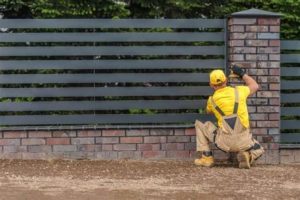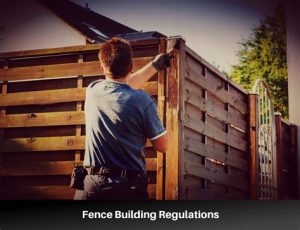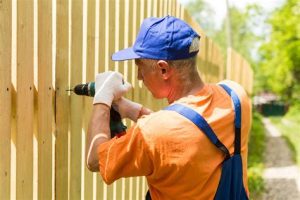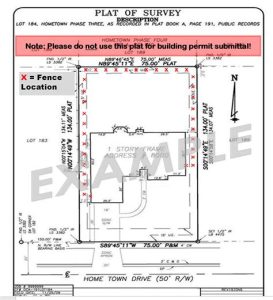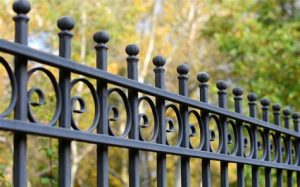Discover essential tips for choosing the right fence material, understanding local codes, installation prep, hiring help, and maintaining your new fence.Installing a fence around your property can significantly enhance both its security and aesthetic appeal. However, before you embark on this project, there are several essential factors to consider to ensure a successful installation that meets your needs and complies with local regulations. From selecting the right fence material that complements your home and withstands the elements, to understanding local building codes that govern height and placement, each step is crucial. Additionally, whether you choose to hire a professional or take the DIY route can impact the cost and outcome of your fence. Finally, don’t forget about maintenance; a well-cared-for fence can last for years and continue to add value to your home. In this post, we’ll guide you through these key considerations to help you make informed decisions for your fencing project.
Choosing the Right Fence Material
When it comes to choosing the right fence material, there are several important factors to consider. It’s essential to understand the different materials available, as each has its own set of advantages and disadvantages. This decision can affect not only the aesthetic appeal of your property but also its durability and maintenance needs.
| Material | Durability | Maintenance | Cost |
|---|---|---|---|
| Wood | Moderate | High | Moderate |
| Vinyl | High | Low | High |
| Chain Link | Moderate | Low | Low |
| Aluminum | High | Low | Moderate to High |
| Composite | High | Low | High |
- Purpose: Are you looking for privacy, security, or merely a decorative boundary?
- Climate: Some materials fare better in certain weather conditions than others.
- Aesthetic Preference: Ensure the material complements the style of your home and landscape.
Ultimately, selecting the appropriate fence material is crucial for achieving a successful installation. Assess your needs, preferences, and budget to make an informed choice that will enhance your property for years to come.
Understanding Local Building Codes
When it comes to installing a fence around your property, understanding local building codes is paramount. These codes dictate what you can and cannot do in terms of fencing, taking into consideration the material used, the height of the fence, and even the placement on your property. Not adhering to these regulations can lead to fines and, in some cases, the requirement to remove the installed fence.
Before starting your fencing project, it’s crucial to check with your local government or zoning office. Generally, local building codes are designed to ensure safety and aesthetic harmony within neighborhoods.
| Code Aspect | Description |
|---|---|
| Height Restrictions | Many areas specify maximum heights for fences to maintain sight lines and neighborhood aesthetics. |
| Material Requirements | Some locales may require specific materials to be used for durability and safety. |
| Setback Specifications | There are often requirements regarding how far a fence must be set back from property lines. |
In addition to local regulations, some homeowner associations may have their own rules regarding fence installation. Make sure to review those guidelines as well. In summary, understanding local building codes is essential in ensuring a smooth and compliant fencing project.
Preparing the Area for Installation
Before you embark on your fencing project, preparing the area for installation is paramount. It sets the foundation for a durable and aesthetically pleasing fence. Proper preparation can also help you avoid potential disputes with neighbors and ensure compliance with local regulations.
- Survey the Property Line: Clearly identify where your property ends and your neighbor’s begins. This can help you avoid encroachment issues.
- Check for Underground Utilities: Before digging post holes, contact local utility companies to mark any underground lines. This will help prevent accidents and costly repairs.
- Clear the Area: Remove any obstacles such as rocks, shrubs, or old fencing materials. Additionally, level the ground if it’s too uneven, ensuring a stable installation.
Effective preparation not only guarantees a smooth installation process but also maximizes the lifespan of your fence. Taking the time to follow these essential steps will pay off in the long run, giving you the peace of mind that your fence is built on a solid foundation.
Hiring a Professional vs. DIY
When it comes to installing a fence around your property, one of the most significant decisions you’ll face is whether to hire a professional or tackle the project yourself. Both options come with their unique set of advantages and challenges, and understanding these can help you make an informed choice.
Hiring a professional can streamline the installation process. Professionals typically have the experience and tools needed to complete the job efficiently and correctly. They understand local building codes and can navigate any necessary permits, relieving you of that burden. Moreover, they can offer a warranty on their work, providing peace of mind.
On the other hand, attempting a DIY fence installation can save you money and allow for a sense of personal achievement. If you have some experience with construction, you may find the process enjoyable. There are numerous resources available, from online tutorials to community workshops, that can guide you every step of the way. However, it’s essential to consider your skill level and the complexity of the job. If things go wrong, it might end up costing more than hiring an expert.
| Considerations | Hiring a Professional | DIY |
|---|---|---|
| Experience | High – industry knowledge | Varies – skill-dependent |
| Time Commitment | Often quicker installation | Potentially longer – based on your schedule |
| Cost | Higher upfront costs | Cost-efficient if you have tools |
| Warranty | Often includes warranty | None |
Maintaining Your New Fence
Installing a new fence is just the beginning of your journey towards a beautiful and secure property. To ensure that your investment lasts for years, regular maintenance is essential. Proper upkeep not only keeps your fence looking great but also helps to prolong its lifespan.
First and foremost, you should regularly inspect your fence for any signs of damage. Look for issues such as rotting wood, loose panels, or rusted metal fixtures. Addressing these problems promptly can prevent more extensive damage in the future. It’s also important to check for any overgrowth of plants or weeds that might be pressing against the fence, as this can lead to unwanted moisture buildup and potential deterioration.
Another critical aspect of fence maintenance is cleaning. Depending on the material of your fence, you may need to wash it periodically using a mild detergent and water. For wooden fences, consider applying a protective sealant every few years to guard against moisture and UV damage.
Frequently Asked Questions
Why was the fence installed around the edge?
The fence was installed to provide safety and security, preventing unauthorized access and ensuring the protection of the surrounding area.
What materials were used in the construction of the fence?
The fence was constructed using durable materials such as wood, metal, or vinyl, chosen for both longevity and aesthetic appeal.
How tall is the fence?
The fence is typically around 6 feet tall, which is a standard height for privacy and security while still complying with local regulations.
Are there any maintenance requirements for the fence?
Yes, regular maintenance is necessary, which may include painting, staining, or treating the materials to protect against weather damage and wear.
What local regulations should be considered before installing a fence?
Before installing a fence, it’s important to check local zoning laws, property lines, and any homeowner association guidelines that may be applicable.
Can the fence be customized according to personal preferences?
Absolutely! The fence can be customized in terms of height, material, color, and design to suit individual preferences and the surrounding landscape.
Is professional installation recommended, or can I do it myself?
While DIY installation is possible, professional installation is recommended for the best results, especially if you lack experience with fencing projects.
